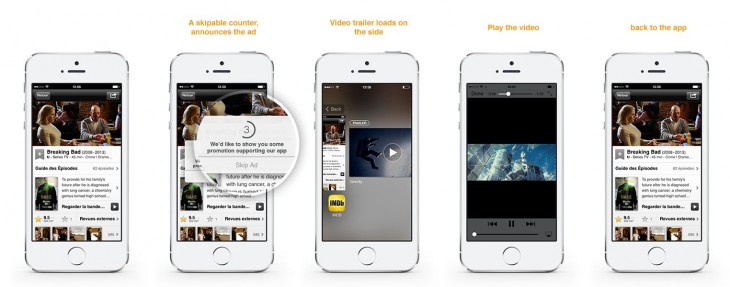
Last week, Appsfire announced it is ditching its renowned app discovery service on iOS and Android, as it seeks to shift its business towards a mobile advertising solution — and today that has surfaced in the form of URA MAKI, which the company describes as an entirely new ad experience that no one has done before.
Ura Maki’s selling point is that developers don’t need to make changes to their apps to give way to ads, in turn compromising the experience of the app. Forcing the ad on users can turn them off too.
What is unique about the Ura Maki experience is that users have more control over their ads. Users get shown a message that announces the ad first, and they get to skip the ad before it shows. The ad can also be dismissed by a swipe up, or just by tapping the left side back to the app. In this case, you don’t waste time watching ads for apps that you already have as well.
As for developers, they don’t need to change anything and add anything to their apps. The ad units load on the side of the app, while the app is still running. The developer also gets to decide when to trigger Ura Maki and there is minimal disruption to the app experience, as the app continues to run even when the ad loads. The download experience also takes place in the app, so the publisher keeps its users.
Furthermore, Ura Maki prides itself on being native code, so it loads much faster, and it is optimized for iOS 7 on the iPhone and iPad. The ad experience is already localized to 13 languages as well.
Appsfire’s CEO Ouriel Ohayon believes that “mobile ads suck” and app developers are very much pressured to execute apps properly, both in terms of user engagement and advertising — which is why the company has stepped into this space. Just last month, Appsfire launched an SDK targeting app developers, which offered smart, unobtrusive push and in-app notifications, that take advantage of users’ behavior and location in the physical world.
Appsfire is handpicking developers to embed Ura Maki in their apps right now, and is planning to use it initially for video ads.
Headline image via Robyn Beck/AFP/Getty Images
Get the TNW newsletter
Get the most important tech news in your inbox each week.






